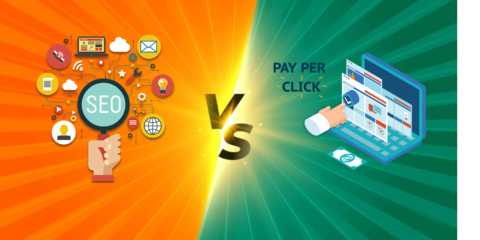In today’s digital age, online advertising has become an essential component of any successful marketing strategy. With billions of users active on social media platforms and search engines, businesses have unprecedented opportunities to reach and engage with their target audience. Among the most popular advertising platforms are Facebook Ads and Google Ads, each offering unique advantages and capabilities. In this comprehensive guide, we’ll explore the differences between Facebook Ads and Google Ads and provide insights to help you choose the right platform for your business growth.
Understanding Facebook Ads: Targeting the Right Audience

Facebook Ads is a powerful advertising platform that allows businesses to target users based on demographic information, interests, behaviors, and more. With advanced targeting options, businesses can reach highly specific audience segments, making it an ideal choice for brands looking to connect with niche markets. Additionally, Facebook’s vast user base and engagement metrics provide valuable insights into audience behavior, enabling businesses to refine their targeting and optimize their campaigns for maximum impact.
Exploring Google Ads: Capturing Intent with Search Advertising

Google Ads, formerly known as Google AdWords, is the leading platform for search advertising, allowing businesses to display ads on Google’s search results pages. Unlike Facebook Ads, which focus on targeting specific audience segments, Google Ads capture user intent by displaying ads based on search queries. This means that businesses can reach users actively searching for products or services related to their offerings, making Google Ads an effective tool for driving high-quality traffic and generating leads.
Always be relevant, create relevant campaigns, and give the user the answer to his query as precisely as you can
Marko Kvesic, an Online Marketing Manager at GoTraffic Online Marketing Agency
Key Differences Between Facebook Ads and Google Ads
While both Facebook Ads and Google Ads offer valuable opportunities for businesses to advertise online, there are significant differences between the two platforms that should be considered when choosing the right advertising strategy for your business:

- Audience Targeting: Facebook Ads excels at targeting specific audience segments based on demographic information, interests, and behaviors. In contrast, Google Ads capture user intent by displaying ads to users actively searching for relevant keywords or phrases.

- Ad Formats: Facebook Ads offer a variety of ad formats, including image ads, video ads, carousel ads, and more, allowing businesses to create visually engaging and interactive content. Google Ads primarily consist of text-based ads displayed on search results pages, although they also offer display and video advertising options.

- Cost Structure: The cost structure of Facebook Ads and Google Ads varies significantly. Facebook Ads typically operate on a cost-per-click (CPC) or cost-per-thousand-impressions (CPM) basis, while Google Ads use a pay-per-click (PPC) model, where advertisers only pay when users click on their ads.

- Placement: Facebook Ads are displayed within the Facebook platform, including the News Feed, Instagram, Messenger, and Audience Network. Google Ads, on the other hand, appear on Google’s search results pages, as well as on websites within the Google Display Network.
Choosing the Right Advertising Platform for Your Business
When deciding between Facebook Ads and Google Ads, it’s essential to consider your business goals, target audience, and advertising budget. Here are some factors to consider:

- Business Objectives: Determine whether your primary objective is to increase brand awareness, drive website traffic, generate leads, or drive conversions. Facebook Ads may be more suitable for brand awareness and engagement, while Google Ads may be better suited for driving website traffic and conversions.
- Target Audience: Consider the demographics, interests, and behaviors of your target audience. If you’re targeting a specific niche or demographic, Facebook Ads may offer more precise targeting options. If you’re targeting users actively searching for your products or services, Google Ads may be more effective.
- Advertising Budget: Evaluate your advertising budget and consider the cost structure of each platform. Facebook Ads may be more cost-effective for reaching a broad audience, while Google Ads may yield higher-quality leads but at a potentially higher cost-per-click.
- Ad Format and Creative: Consider the type of ad format and creative assets that best align with your brand and messaging. Facebook Ads offer more diverse ad formats and creative options, while Google Ads primarily consist of text-based ads.
To make Facebook ads convert well, companies will focus on their conversion rates by running promotions, discounts and special deals to Facebook users in order to get better returns on the campaign. Part of it is also targeting the right people at the right time.
Evan Weber, Social Media Expert
Conclusion: Maximizing Your Advertising ROI
In conclusion, both Facebook Ads and Google Ads offer valuable opportunities for businesses to reach and engage with their target audience online. By understanding the differences between the two platforms and considering your business objectives, target audience, and advertising budget, you can choose the right advertising strategy to maximize your ROI and drive business growth. Whether you’re looking to build brand awareness, drive website traffic, or generate leads and conversions, the key is to tailor your approach to align with your unique business goals and audience preferences. With a strategic and data-driven approach to online advertising, you can unlock the full potential of both Facebook Ads and Google Ads to achieve your business objectives and drive long-term success.







